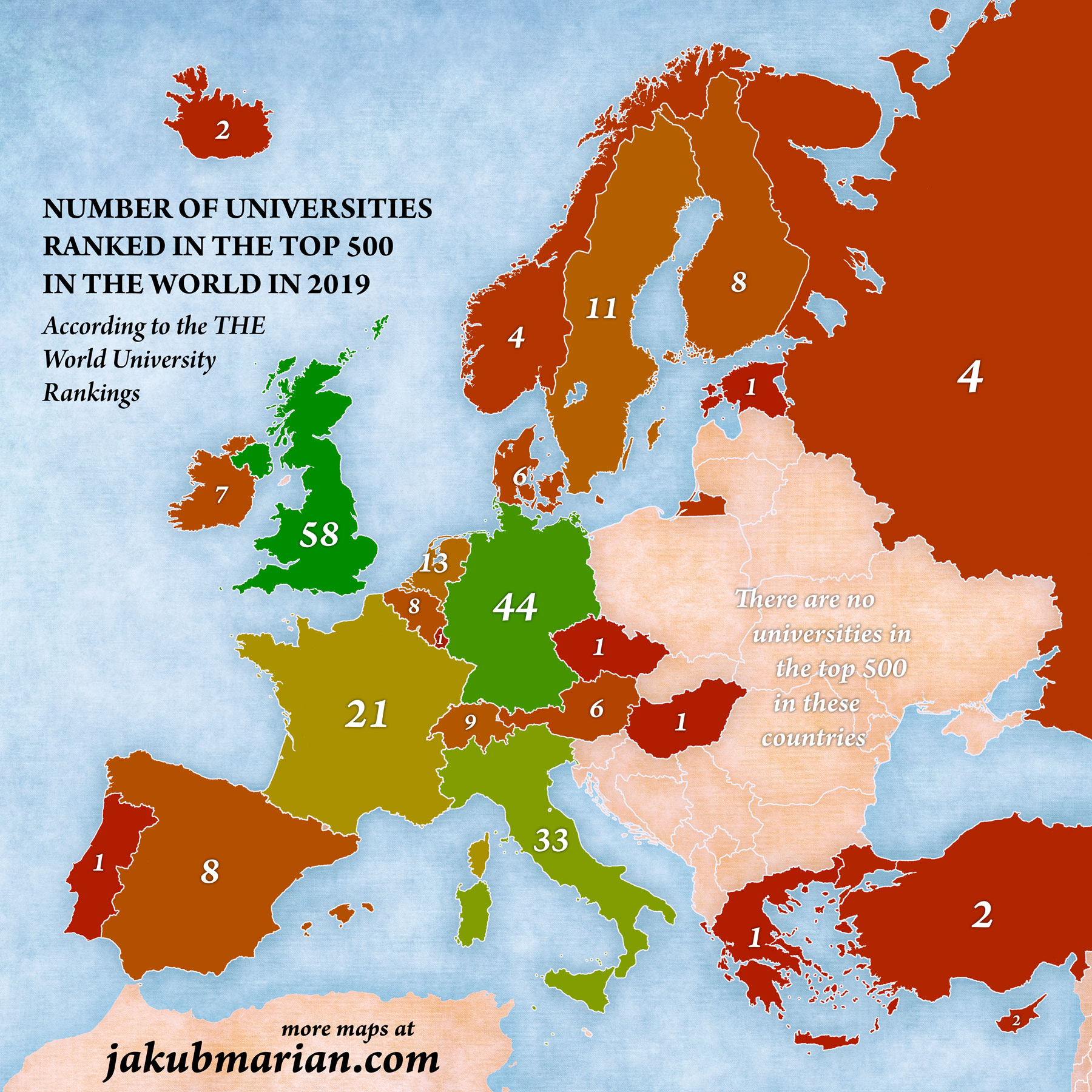Times Higher Education regularly publishes World University Rankings, which is a list of more than 1,250 of some of the best universities in the world, ranked according to a combination of the following criteria:
- Teaching (learning environment)
- Research (volume, income, reputation)
- Citations (research influence)
- International outlook (international students, staff, and collaboration)
- Industry income (knowledge transfer)
The map below shows the number of universities that are in the top 500 on the 2019 list. It should be noted that other university rankings (e.g. the QS World University Rankings) may use a different methodology, which may lead to different results.

While this is an interesting bit of trivia, the numbers do not take population and numbers of students into account (it is natural to expect a large country to have more top-ranked universities than a small country).
The map below solves this problem by calculating the number of students studying at top-500 universities divided by the population in thousands. For example, the figure 13.6 in Germany indicates that there are 13.6 students studying at a top 500 university per 1,000 people.

As you can see, the playing field is much more level here, the champion being Iceland, which, despite its tiny size, has two top-500 universities.
 Tip: Are you a non-native English speaker? I have just finished creating a
Tip: Are you a non-native English speaker? I have just finished creating a  Web App
Web App
